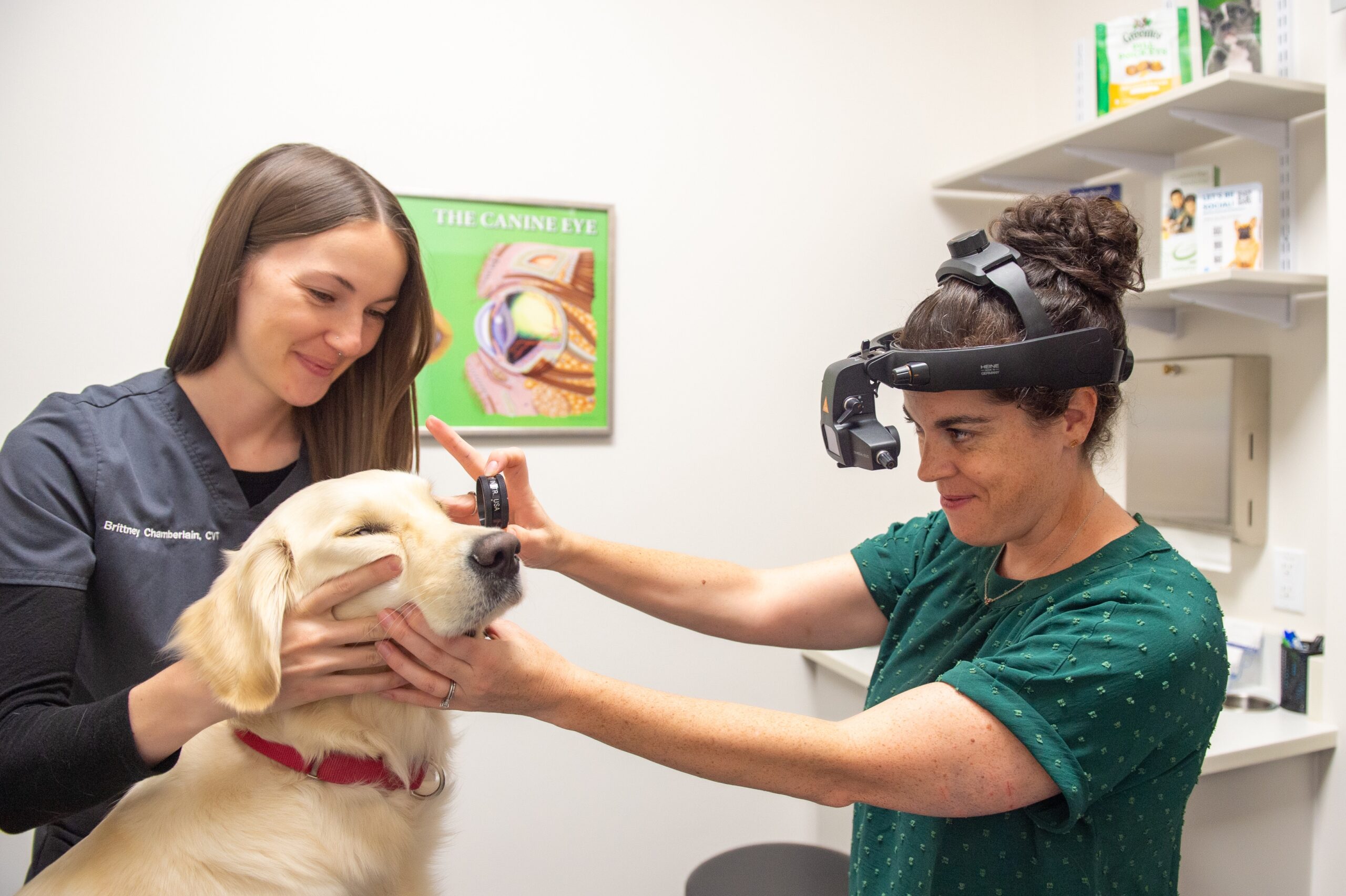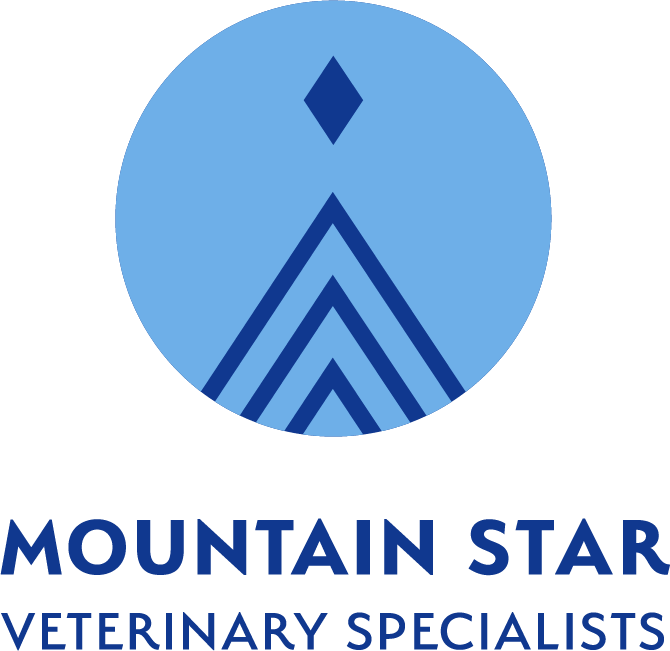
This surgery is a last resort. We find that pets often adapt remarkably well: they are free of pain and can enjoy their favorite activities again.
Enucleation is the surgical removal of a cat or dog’s entire eye. We know this sounds scary so we want to explain why we sometimes recommend this procedure for your pet. At Mountain Star, we take pride in spending lots of time with you and your pet to help you make the best decision for your pet and your family.
This surgery is the last resort when all the other treatment options are no longer working and your pet is suffering.
The first question pet parents always ask is, “Will my pet suffer afterwards?” We find that cats and dogs adapt remarkably well post-surgery. They are free of pain and can enjoy their favorite activities again – usually within two weeks.
Dr Emily Conway, Board Certified Veterinary Ophthalmologist at Mountain Star Veterinary Specialists, shares details in this blog about why we might recommend enucleation, what you can expect during the procedure, and information about the healing process.

Why might we recommend an enucleation?
As your veterinarian, we understand how challenging this decision can be. Our primary concern is always your pet’s well-being and we’re here to guide you through this process with compassion and care, ensuring your pet and your family receive the best possible outcome.
These are the diseases that could lead to an eye removal in a pet:
- Uncontrolled glaucoma. Glaucoma in cats and dogs is a painful condition caused by increased pressure in the eye. It can lead to blindness if left untreated. As your veterinarian, my top priority is always your pet’s comfort. When glaucoma isn’t responding to treatment and your beloved cat or dog is in pain, or if the pressure in the eye can no longer be controlled, it might be time to consider removing the eye. This decision is never easy, but enucleation can significantly improve your pet’s quality of life by relieving pain and preventing further discomfort.
- Cancerous or non-cancerous ocular tumors. An ocular tumor is an abnormal growth in or around the eye. While tumors can vary in severity, they often require careful monitoring and treatment. If a tumor threatens your pet’s vision, comfort, or overall health, it may lead to the difficult decision of eye removal. Removing the eye can be the best way to eliminate pain, prevent the spread of disease, and ensure your pet can continue to enjoy a happy, pain-free life.
- Severe trauma. In cases where your dog’s eye has sustained significant damage – like getting bitten by another dog — enucleation may be the best option. Severe trauma to the eye can cause significant pain and visible damage, such as swelling, bleeding, or cloudiness. When the injury is beyond repair, removing the eye may be the best option to relieve your pet’s suffering and prevent further complications.
- Chronic eye infections. Severe cases of conjunctivitis or uveitis can cause ongoing pain and damage to your pet’s eyes if they don’t respond to treatment. Over time, these infections can lead to significant scarring, loss of vision, or persistent discomfort. In situations where the infection cannot be controlled and continues to affect your pet’s quality of life, eye removal may be the most compassionate choice to ensure they are free from pain.
- Severe Corneal Disease. Corneal infections and corneal trauma can perforate the cornea. Sometimes, perforated eyes can become blind, painful, and unresponsive to medical treatment.
Only in the most severe cases do we recommend removing both eyes. This is called a bilateral enucleation. We will discuss this option with you if it ensures your pet’s survival and alleviates their pain.

What you can expect during an enucleation procedure and during the healing process
We remove the entire eyeball along with the tear glands and a portion of the eyelids during an enucleation. The remaining skin is then sutured closed in several layers. Your pet’s hair will eventually grow back over the surgical area.
After surgery, your pet may experience some swelling and bruising around the surgical site, but this will resolve with time. We will place a protective collar that your pet will transition out of over the 2 weeks of healing.
- Uncontrolled glaucoma
- Cancerous or non-cancerous ocular tumors
- Severe trauma
- Chronic eye infections
- Severe Corneal Disease
You’ll return to Mountain Star about 2 weeks days after the surgery for the skin suture removal.
Most pets adapt remarkably well after enucleation, often returning to their normal activities within a few days.
Mountain Star ophthalmologists aim to heal each pets’ eye conditions so you can enjoy your pets as healthy companions. We’re in this together and will hold your hand through this process.
Call us today if you’d like to talk about your cat or dog.
